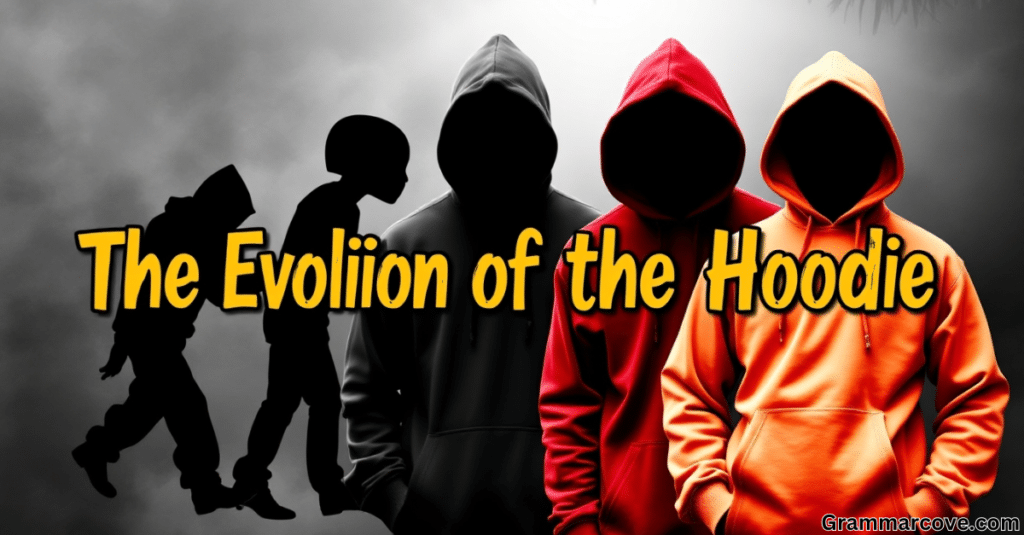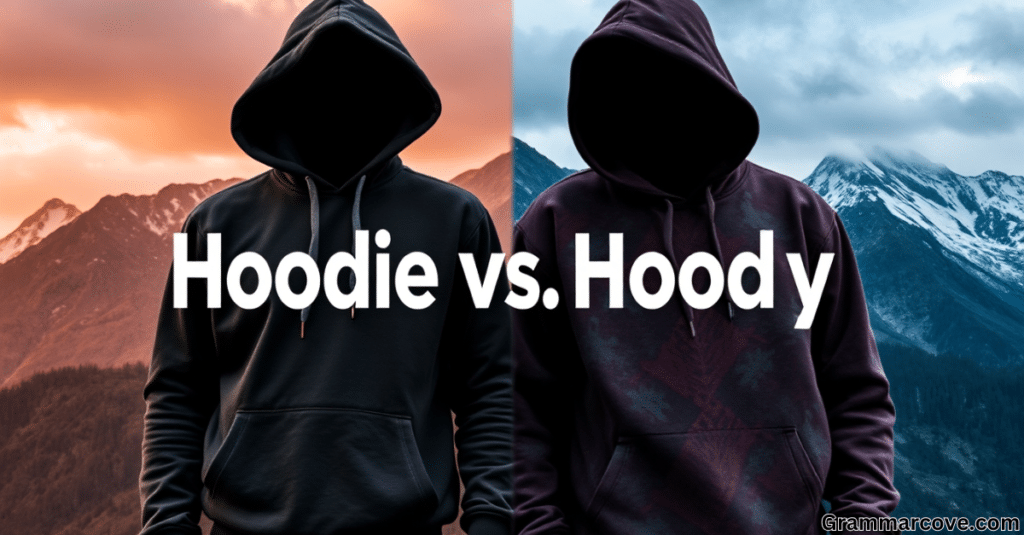When it comes to choosing between hoodie and hoody, the decision isn’t just about spelling preferences—it also involves understanding the nuances of clothing terminology, regional spelling preferences, and how these terms fit within the broader context of fashion, culture, and branding. Whether you’re buying one for yourself, designing a collection for your store, or simply talking about your favorite casual wear, knowing the difference between hoodie and hoody can help you use the right term at the right time.
Hoodie vs. Hoody: The Spelling Debate
At first glance, hoodie and hoody might seem like the same word with a minor spelling variation. However, the choice of which one to use has sparked a long-running spelling debate. So, why the two different spellings?
1. Hoodie: The Popular Choice
In most cases, hoodie is the more commonly used and widely accepted spelling. It’s the standard in American English and has become the dominant form in popular culture and mainstream fashion branding. The term is often associated with comfort and casual fashion, particularly in street fashion and athleisure.
2. Hoody: A Less Common Alternative
While hoody is still used by some, particularly in the UK, it tends to be seen as a slightly less mainstream variation. It may be preferred by certain brands or individuals as a matter of personal or regional preference. Some fashion enthusiasts or niche communities in fashion may also gravitate towards hoody, making it feel more exclusive or unique within their specific subcultures.
The Evolution of the Hoodie

The hoodie has come a long way from its humble beginnings. What started as a practical piece of comfortable wear for laborers in the early 20th century has transformed into a street fashion staple. It has evolved not just in style, but in its cultural significance.
A Brief History
The first hooded sweatshirt dates back to the 1930s, created by the brand Champion for workers who needed extra warmth. As time went on, it became popular among athletes and students, particularly in the 1970s, when sportswear began to merge with everyday fashion.
In the 1980s and 1990s, the hoodie exploded in popularity, fueled by its association with hip-hop culture and rebellious youth movements. It was then that the pop culture influence truly began to solidify. The hoodie became a symbol of defiance, anonymity, and even a sense of belonging to a niche community in fashion. Whether it was worn by skateboards or athletes, the hooded sweatshirt was no longer just for physical activities—it had become an essential part of youth culture.
Hoodie vs. Hoody in Different Regions

A significant part of the spelling debate comes from regional spelling preferences. In American English, the term “hoodie” is overwhelmingly used, while British English speakers are more likely to opt for hoody.
American English vs. British English
In the United States, the term hoodie dominates across most contexts, from casual wear to athleisure collections and even in popular films and television shows. On the other hand, in the UK, the use of hoody was more common until recently. Hoodie, however, is gaining traction globally, especially with the rise of global fashion brands and digital media.
The difference in spelling reflects the ongoing divergence in American English vs British English norms, particularly in terms of clothing terminology.
Fashion Branding and the Rise of Hoodies
Over the years, fashion brands have embraced the hoodie as a canvas for expression. Whether it’s through bold designs, branded logos, or limited-edition collections, the hoodie has become an integral part of fashion branding strategies.
High-End Fashion Brands and Streetwear
Many fashion brands now include hoodies in their collections, ranging from high-end designers to street fashion labels. The pop culture influence and rise of athleisure have contributed to the increasing popularity of hoodies across all demographics. Brands like Supreme, Off-White, and Balenciaga have all used the hoodie as a key element in their collections, cementing its status as both a casual and luxury item.
In street fashion, the hoodie serves as a way for individuals to showcase their personal style, often through bold prints, statements, or references to pop culture. This has helped shape the hoodie’s cultural significance, making it more than just a comfortable piece of clothing.
The Sweatshirt vs. Hoodie Difference
Although both sweatshirts and hoodies are popular forms of casual wear, there are key differences between the two. Understanding these distinctions can help you make informed decisions when buying clothes or talking about these garments.
1. Hoodie: The Hooded Sweatshirt
A hoodie is essentially a sweatshirt with a hood attached. While the term sweatshirt refers to a simple, hoodless top, the hoodie adds a functional element—a hood. This design is ideal for those looking for warmth, comfort, and practicality. The hoodie often features a drawstring to adjust the hood, and many include a kangaroo pocket for added convenience.
2. Sweatshirt: The Hoodless Version
In contrast, a sweatshirt is a pullover garment typically made from cotton or a cotton-blend fabric, without a hood. It offers warmth and comfort but without the added protection of a hooded sweatshirt. For those who don’t need the extra coverage, the sweatshirt is a classic option that pairs well with a variety of outfits.
The key difference lies in the design and the functional element of the hood in a hoodie
The Plural of Hoodie and Hoody
When referring to more than one hoodie or hoody, it’s simple: you can use hoodies for both spellings. Both “hoodie” and “hoody” follow the same pattern in the plural form, though you may find that hoodies is more commonly used in both American and British contexts.
The Influence of Pop Culture and Digital Culture
The pop culture influence on the hoodie is undeniable. From iconic TV shows like The Fresh Prince of Bel-Air to movies like The Matrix, the hoodie has been a staple in entertainment. Its portrayal in films often associates the hoodie with youth, rebellion, and urban culture, helping it become a fashion icon.
Digital Culture and SEO
In today’s world, digital culture plays a significant role in shaping trends and influencing what people search for online. SEO (search engine optimization) has made hoodie the more popular search term, as it’s used by fashion brands and companies more frequently. Online retailers, influencers, and bloggers tend to favor the more common hoodie, contributing to its widespread usage in digital culture.
Conclusion
When it comes down to it, the choice between hoodie and hoody largely depends on where you are and what you’re referencing. Whether you’re discussing the garment in casual wear, street fashion, or athleisure contexts, both terms have found their place in the world of fashion. Hoodie remains the dominant spelling in American English, while hoody still carries weight in British English, though the influence of global fashion brands is shifting the balance.
By understanding the cultural significance of hoodies, the pop culture influence, and the nuances of regional spelling preferences, you can navigate this spelling debate with confidence. Ultimately, whether you use hoodie or hoody, what matters most is the comfort, style, and cultural meaning that these garments represent in today’s fashion landscape.

Steel Morgan is an experienced blogger passionate about language and writing. On Grammarcove. he shares his expertise in grammar, punctuation, and effective communication, making complex rules simple and accessible for readers. With a knack for clear explanations and engaging content, Steel aims to help others master the art of language.







